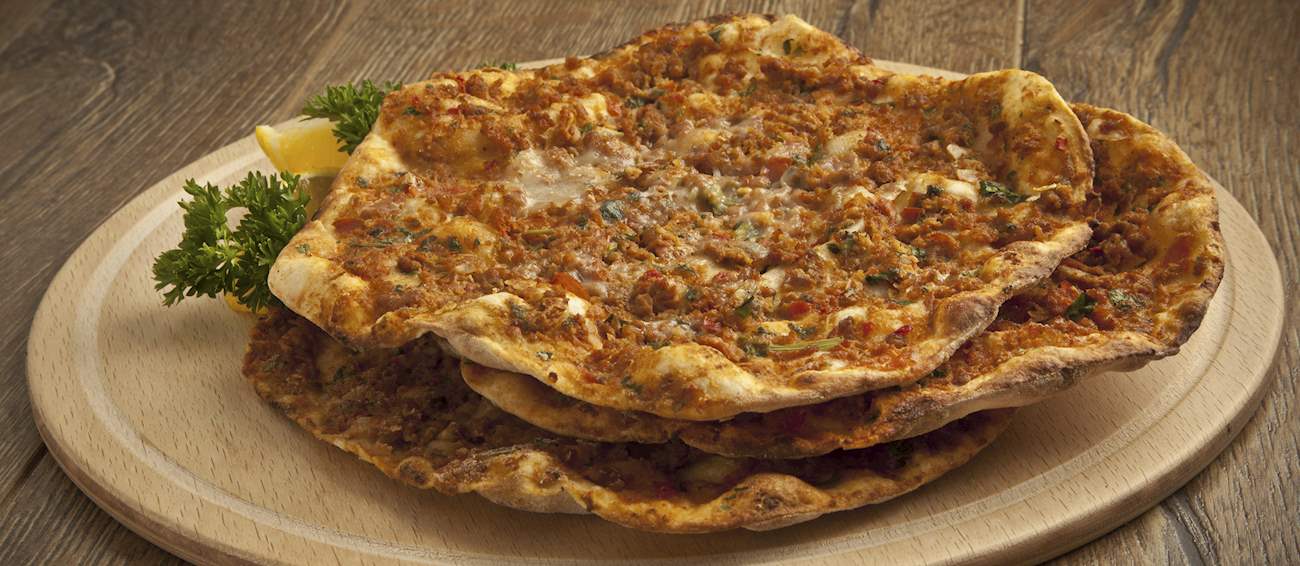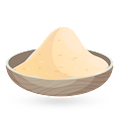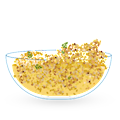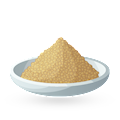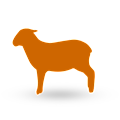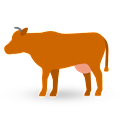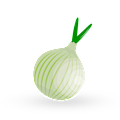TABLE OF CONTENTS
Best Armenian Foods
Even though lahmacun is popularly nicknamed Turkish pizza, it's origin is disputed and can be traced to Armenia, Syria, Lebanon, and Turkiye. It can be found at numerous street stalls as well as in virtually any traditional restaurant, but also in kebab eateries where they typically serve mini lahmacuns as appetizers.
The perfect lahmacun is made by rolling a ball of sturdy semolina dough into a thin disc which is only lightly spread with meat - either lamb or beef, minced to a paste together with chili, onions, and other seasonings. The dish is then shortly baked in a super-hot (and preferably wood-fired) oven.
MAIN INGREDIENTS
Lavash is a traditional flatbread claimed by many food specialists to be Armenian in origin, but it is well-known and prepared throughout Western Asia (most noteably Iran and Türkiye) and the Caucasus (most noteably Azerbaijan). The dough consists of wheat flour, salt, and water leavened only with a sourdough starter.
Once the dough has risen, it is shaped into small lumps that are rolled flat and then slapped against the inside of a clay oven called tonir. Depending on the part or region of Armenia, these flatbreads can vary in thickness, size, shape, and the method of kneading.
MAIN INGREDIENTS
Sucuk or sujuk is a semi-dry, spicy sausage with a high fat content, popular in Middle Eastern, Balkan and Central Asian cuisines. It is traditionally prepared with ground beef and spices such as cumin, salt, paprika, and garlic. The sausage should be dried for at least three weeks before consumption.
It can be served cold and sliced thinly, but it is more commonly fried and paired with eggs and vegetables. In Lebanon, it is often consumed with tomatoes and garlic sauce in a pita bread, while in Syria, Egypt, Iraq, and Israel, sucuk is often used as a pastry topping.
MAIN INGREDIENTS
Lyulya kebab is a unique kebab variety popular throughout the Caucasus region. It typically consists of ground lamb combined with finely chopped onions. The mixture is seasoned with salt and black pepper, then skewered and grilled. Other types of meat such as fish and poultry can also be used in the preparation of lyulya.
What makes this kebab variety so unique is the process of kneading the meat for a long time so that it becomes denser and does not fall apart. The dish dates back to the 2nd century, and it was even praised by the famous Roman historian Pliny the Elder, as well as the famous Roman scientist Ptolemy.
OTHER VARIATIONS OF Kebab
MAIN INGREDIENTS
A culinary delicacy coming from Artsakh, or the Nagorno-Karabakh region, zhingyalov khats is a traditional flatbread that contains a variety of herbs and greens. Often considered a lavash with herb filling, this flatbread typically consists of a thin unleavened dough that is topped with a mixture of thinly sliced herbs and greens, folded over, sealed, and then carefully rolled out again.
Zhingyalov khats is traditionally baked on a hot saj, a type of Armenian cast-iron vessel resembling a bulging tray. The filling is typically made with butter, salt, onions, and lots of herbs and greens, sometimes supposedly even up to 20 different kinds, such as spinach, leeks, scallions, nettle, chickweed, mint, parsley, tarragon, lettuce, chard, dill, or kale.
Jajukh is a traditional salad originating from Armenia. The salad is usually made with a combination of sliced cucumbers, yogurt, crushed garlic, chopped mint, and salt. The ingredients are stirred until combined, and ice cubes are then added to the bowl and left to slightly melt.
The salad is then stirred once more and served cold. Jajukh is especially popular on hot summer days due to its refreshing properties. It’s recommended to serve it with pita or lavash on the side.
MAIN INGREDIENTS
Matnakash is a traditional bread consisting of a smooth, elastic dough made with flour, yeast, water, sugar, salt, and oil. Originally, it was prepared only with flour and water, and without yeast. Before it is baked in a well-steamed oven, the dough is usually topped with a type of flour mixture consisting of flour and water or black tea, which lends the bread a unique, crispy crust that complements its soft and slightly chewy interior.
This Armenian flatbread has a distinctive oval or round shape, and its surface is adorned with a traditional pattern of indentations. Its name matnakash translates to finger draw or finger pull and is derived from the traditional way of adorning the bread’s top by using one’s fingers.
Khashlama is a straightforward and traditional meat dish originating from the Caucasus region. Although time-consuming, the dish is made by simply boiling large chunks of meat, usually beef or lamb, in hot water. The traditional version of this famous dish does not include other ingredients, except a few spices, making the boiled pieces of meat the star of the dish.
Because of this, khashlama contains only the finest meat cuts available. The origins of the dish believe to be in the Georgian Kakheti region, where it is regarded as a regional signature dish. However, it is also widely popular in the neighboring Armenia, causing disputes over the true origin of the dish.
MAIN INGREDIENTS
Considered the national dish of Armenia, harissa is a thick porridge made by slowly simmering korkot (dried or roasted cracked wheat) together with fatty pieces of lamb or chicken meat. Said to have been invented in the Ararat plains, the origins of the dish can be traced back to ancient times, as well as to Gregory the Illuminator, the patron saint of Armenia, who would offer it as a charity meal.
Even to this day, harissa is considered a charity meal, and is traditionally prepared each year for Easter, as well as to commemorate the Musa Ler resistance during the Armenian genocide of 1915. When it comes to the method of preparing, there are two diverging opinions; one claims it is forbidden to stir harissa until it is cooked all the way, while the other insists it should be stirred as soon as the wheat is half-cooked.
Originating from Armenia, chechil is a unique, low-fat cheese made from cow's milk. It is produced by heating up the curd to high temperatures, a process which allows the cheese to be pulled into thin strings. The cheese strings are then placed in brine, sometimes smoked, and hand braided.
Throughout Eastern Europe and Central Asia, chechil is often served as an accompaniment to beer.
TABLE OF CONTENTS
Best Armenian Food Producers
AWARDS

USA Wine Ratings - Gold
2020
BEST Voskevaz Wine Cellar LLC Wines
AWARDS
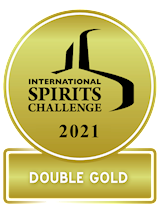
ISC-International Spirits Challenge - Double Gold
2021

ISC-International Spirits Challenge - Gold trophy
2021
BEST Otaroff LLC Spirits
TABLE OF CONTENTS
Best Armenian Food Products
AWARDS

ISC-International Spirits Challenge - Double Gold
2021
AWARDS

USA Wine Ratings - Gold
2020
AWARDS

USA Wine Ratings - Gold
2020
AWARDS

USA Wine Ratings - Gold
2020
AWARDS

USA Wine Ratings - Gold
2020
AWARDS

ISC-International Spirits Challenge - Gold trophy
2021
TasteAtlas food rankings are based on the ratings of the TasteAtlas audience, with a series of mechanisms that recognize real users and that ignore bot, nationalist or local patriotic ratings, and give additional value to the ratings of users that the system recognizes as knowledgeable. For the “Top 40 Armenian Foods” list until March 20, 2025, 4,800 ratings were recorded, of which 1,951 were recognized by the system as legitimate. TasteAtlas Rankings should not be seen as the final global conclusion about food. Their purpose is to promote excellent local foods, instill pride in traditional dishes, and arouse curiosity about dishes you haven’t tried.
